** NOTE** Video for the Harvey Pusher appears below.
What I know of the Harvey Pusher Night Fly comes from a few good sources.
Steve Sywensky owned Fly Fisher’s Paradise, the legendary fly shop of central Pennsylvania. Twenty years ago he was the only fisherman I knew who’d spent any real time around George Harvey and had independently logged countless night hours in the same waters I was trying to learn. Steve unequivocally said the Harvey Pusher was the best night fly he’d ever used.
Joe Humphreys praised the Pusher in his books, his presentations and his video work. And why not? Hump’s legendary state record — a 34”, 16 lb leviathan, as he often says — was caught on a Harvey Pusher. He too calls it the best night fly in his arsenal.
Jim Bashline dedicated a full chapter to George Harvey’s creation in his work, Night Fishing for Trout — The Final Frontier, where he recognized the Pusher for accomplishing something wholly unique under the water.
That’s the point of the Pusher. It’s different. It tantalizes trout like no other fly. Harvey made this point when he revealed the long held “secret fly” in his own book, Techniques of Trout Fishing and Fly Tying. George Harvey, by all local accounts, was a dedicated after dark angler and an innovator.
Harvey’s book was published in 1985. Humphreys’ Trout Tactics in 1989 and Jim Bashline’s work also in 1989. In the last 35 years, not much has been written about the Pusher, so it’s been slid aside in favor of big streamers, articulated creations and trendy mouse flies — all of which catch a lot of trout and are great choices, on the right night.
I believe the Pusher has fallen out of favor simply because it’s an old pattern. It was created in a time when synthetic materials were not widely available. There were no rubber legs, EP brushes, Sculpin Helmets or UV Ice Dub. And it’s fair to assume that modern flies might get the job done better than a fly that was first spun up when Gerald Ford was president. Newer equals better, after all. Isn’t that our human instinct? I’ve made the same assumption myself.

Years ago, Dan Shields (another fly shop legend and night angler) stood behind the counter nodding, while Steve told me about his experience with the Pusher. I was there to buy the Mustad 36890 Salmon Hooks, size #1, that Humphreys recommended on the night fishing VHS tape that I was wearing out from rewinding, and that’s what opened up our conversation. I took their words as gospel. Because as a raw beginner, I needed confidence from somewhere.
I tied the Pushers in my Thompson-A vise. They were difficult at first, and I obsessed over the wing positions too much. To this day, the Pusher is the only fly I tie with wings like that.
Harvey’s night fly is a staple in my lineup. I don’t fish after dark without it. And I’ve fooled many memorable trout on the Pusher.
The Bad Mother, the Pendragon, the Rogue and the Nighthawk. Those are my other four go-to night flies. But that set leaves a gap in the system. And my nighttime lineup is incomplete without a full set of Harvey Pushers. Because there’s nothing else like them.
Check out the video, and then look below for the full recipe, with links to all necessary materials . . .
(Please select 4K or 1080p for best video quality)
If you enjoy this video, the best way to support the effort is to like the video and subscribe on YouTube.
Recipe: The Harvey Pusher Night Fly
** Note ** The links to products below are affiliate links. Meaning, at no additional cost to you, Troutbitten earns a commission if you click through and make a purchase of anything at these websites (not just the materials selected). So, thank you for your support.
Hook: Ahrex Trout Predator or Ahrex Trout Predator Light (#2/0, 1/0, 1, 2, 4)
Thread: Uni Thread 6/0 (Black)
Tail: Pheasant Tail (Black)
Rib: UTC Ultra Wire (Gold or other)
Under Body: Medium Chenille
Body: Hareline Hare's Ear Plus
Main Hackle: 1 or 2 Saddle Hackles (Olive, Brown or Black)
Head Hackle: Chinese Saddle Hackle (Black)
Wings: Select Feathers from Pheasant Skin
Head Finish: Sally Hansen Hard as Nails
Fish It
The Pusher works while both swinging and drifting. It can also produce in any water type that you might fish after dark. But if I had to pick a favorite, it’s the soft water that begs me to tie on a Pusher.
I swing the Pusher most often. And with the combination of slow water and the soft tension of a good swing, the Pusher’s wings do their best work.
Down and across, or across and down with a good Slow Slide — the Pusher comes alive with a little added animation. But don’t overdo it. Short strips, a slight pulse of the rod tip or a simple lift and drop, aim for the Pusher to move a few inches at a time. Remember, the tension of the swing and the hackles of the fly are already adding movement.
No doubt it’s the minor waves of the Pusher wings, flexing in the water, that call in the nighttime trout. So find the water and the presentation that maximizes that flex-and-release effect.
READ: Troutbitten | Streamer Presentations — The Deadly Slow Slide
CATEGORY: Troutbitten | Night Fishing for Trout
PODCAST: Troutbitten | Night Fishing for Trout — Swinging and Drifting
The leader need not be special. Use 6-8 feet of a butt section that turns over the fly, and use a terminal tippet thick enough so the wings of the fly cannot catch the current and spin the Pusher. Equal lengths of 20, 15 and 12 lb Chameleon makes a great leader. And forming a tag at the lower junction allows for attaching a second Pusher or a standard wet fly. That’s a good rig.
The second fly also adds weight to the system, helping to get the flies deeper. I never weight my Pushers because it changes the action. Instead, I carry Pusher of different sizes and heavier hook shanks to get the flies deeper. I’ve done well enough with a split shot attached between two Pushers in some of the deepest water on the coldest nights.
When you work the Pusher, imagine the wings flexing and pulsing as you hand twist retrieve and pulse the rod tip on a three count. See the fly in your mind’s eye and make it come alive in the dark. Then hold on tight.
Fish hard, friends.
** Donate ** If you enjoy this article and video, please consider a donation. Your support is what keeps this Troutbitten project funded. Scroll below to find the Donate Button. And thank you.
Enjoy the day.
Domenick Swentosky
T R O U T B I T T E N
domenick@troutbitten.com


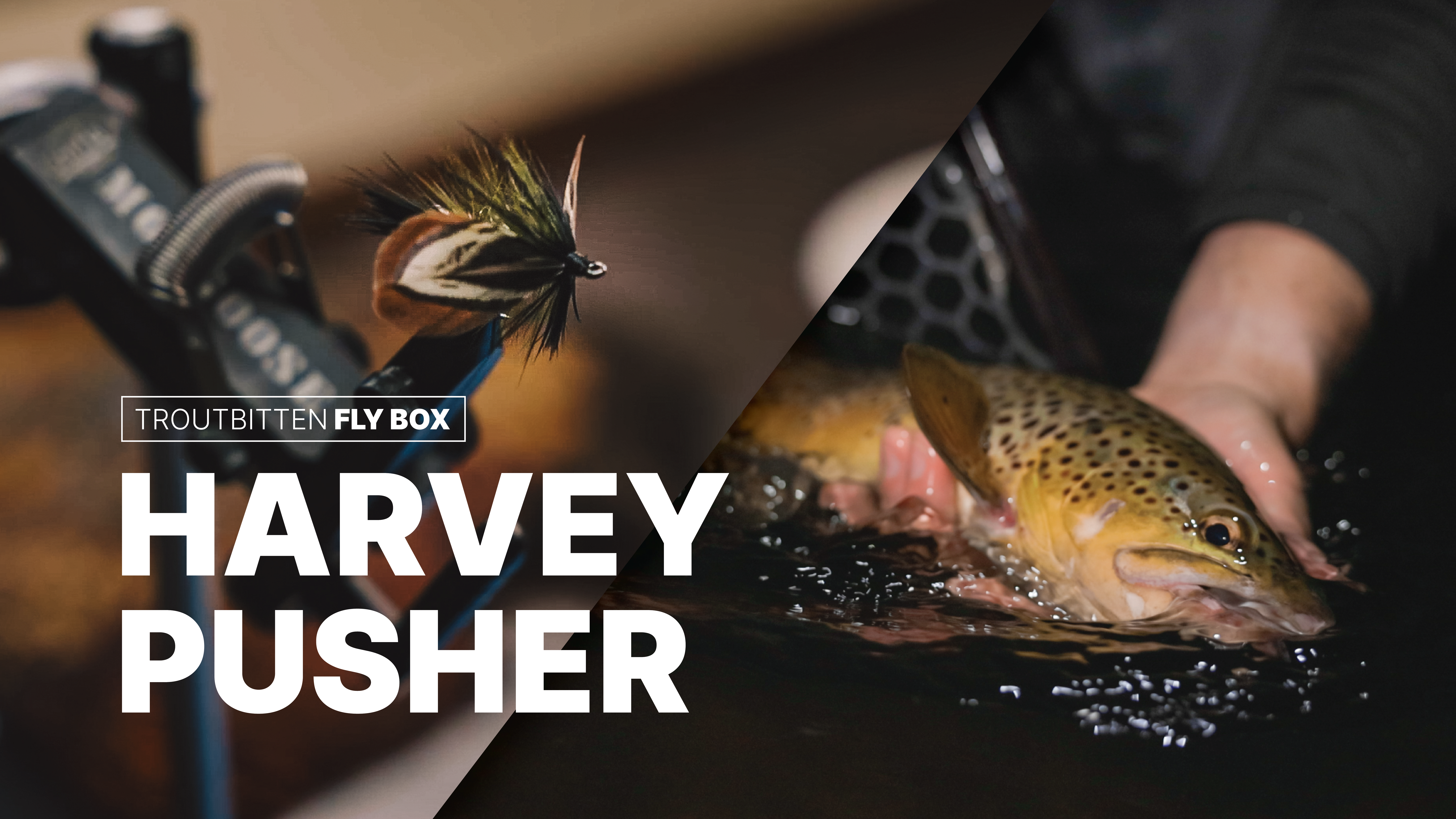

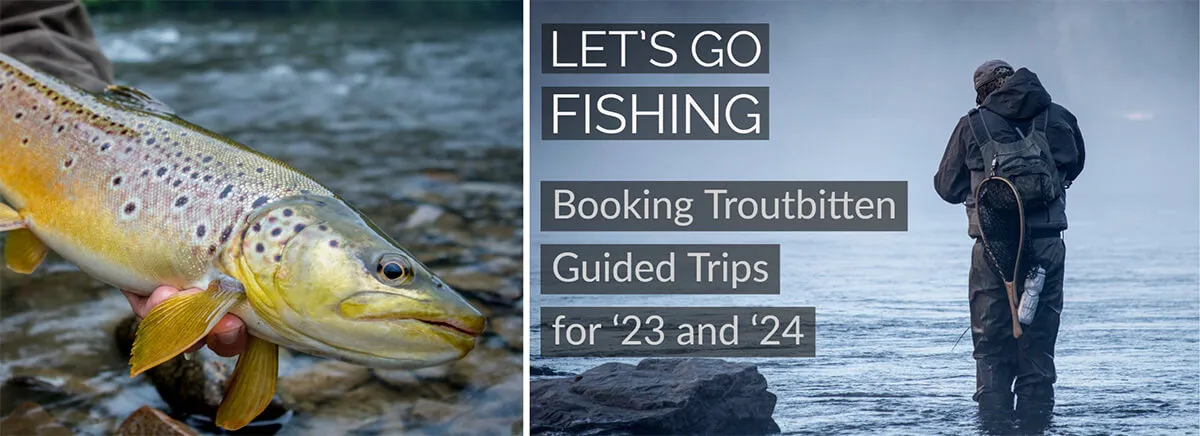
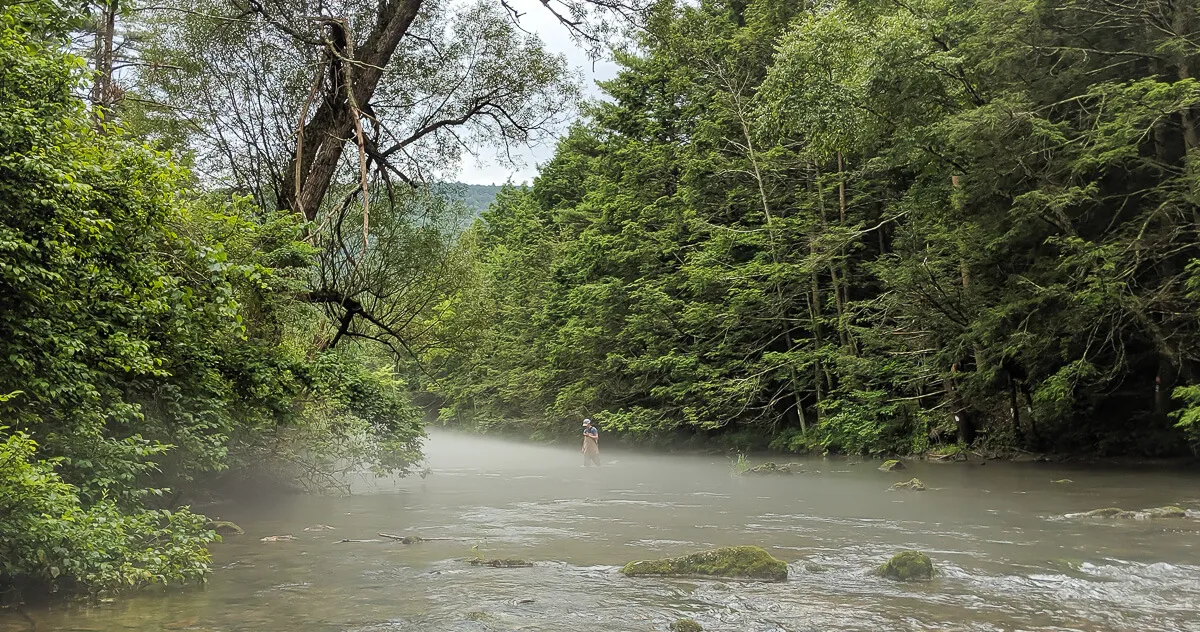
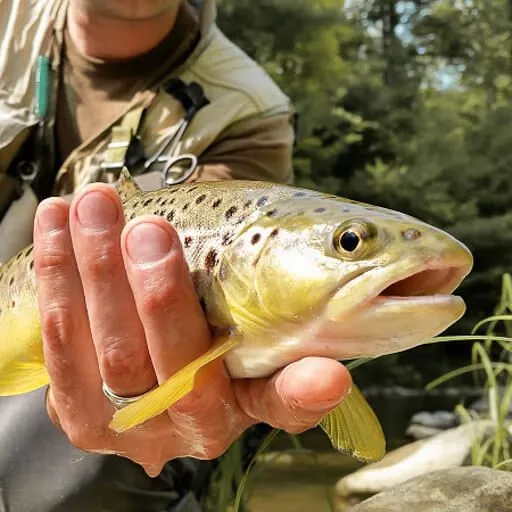
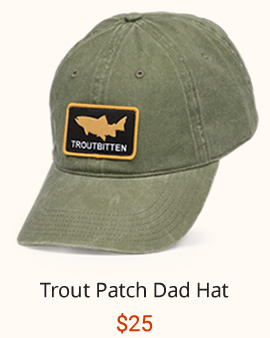

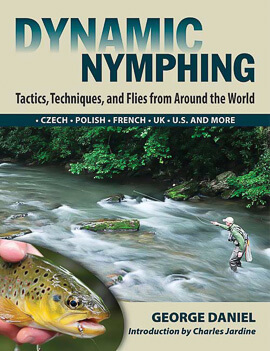
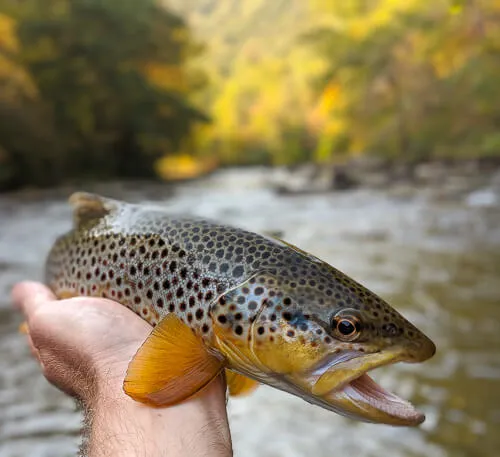
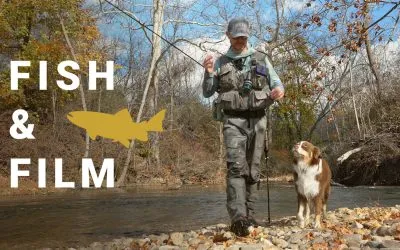
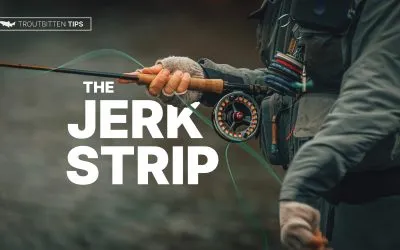



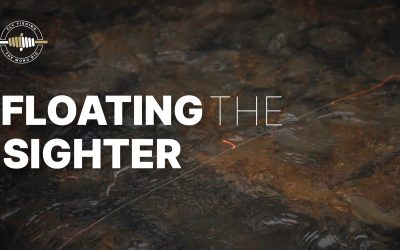


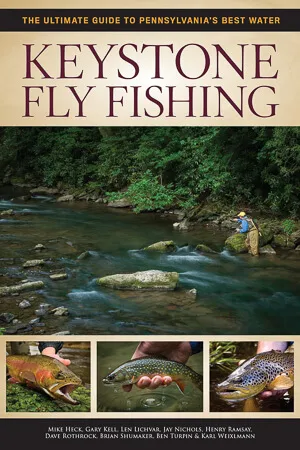
Nice looking fly. I’ll ask the obvious question: Ever tried it in the daytime? Seems like it could be a good attractor with the coloring on the wings and the movement.
I had same question!
Hi Ed,
Honestly, no. I have not put much time on the Pushers in the daylight. I did fish them for a couple days when I first started tying them, because I wanted to see how they moved in the water. That might add up to just ten hours or so, though. And I never got a look from a trout.
Do you ever tie it with smaller concave feathers in the tail position? If not why? It’s the only way I have tied them so far but I have limited experience and success at night. Are the tail “wings” intended to be used on pushers you are fishing on the surface?
Hi Matt. I’ve seen flies tied that way, yes. I wouldn’t say it’s a bad way to do it, but I just don’t. I feel there’s enough motion and performance from the front feathers without adding a second set as the tail.
And for the record, I don’t fish pushers on the surface. I feel like I have better flies for that.
Cheers.
Dom
Got it. Thanks Dom.
Hey, so I have been playing around with this pattern a lot. The biggest problem I had with it is the pheasant neck feathers more or less completely collapsing after getting wet. Two thinks I have found that help.
1) I coat the feathers with dubbing wax
2) a small dear hair head. I add some lead wraps to offset the added buoyancy from the dear hair. I am not sure exactly why this keeps the feathers from collapsing but the difference is pretty impressive. Maybe it is keeping some of the water pressure from affecting the base of the feathers. I am going to try tying a small dear hair “ball” behind the feathers in place of the head to see if that accomplishes the same thing without changing the profile of the fly.
Hi Matt. All feathers do that when they’re out of the water. They’re supposed to. Never judge what a fly looks like out of the water. As soon as you put it back in the water, these feathers spread out again. It’s a common mistake to think of the wings on the Harvey Pusher as oars. They are not. They should not be impenetrable. I’ve tried this myself, coating the wings with various substances to keep them firm and push more water. It only lessens the effectiveness of the fly. For me, there was no doubt about this.
Good feathers function as they should in the water without wax or anything else.
The deer hair head will change the fly substantially. Maybe it’ll be a good, new fly. But it will change what the Pusher is and what it does.
Those are my thoughts. Love your thoughts and innovation.
Dom
The part around the feathers spreading back out in the water is interesting. I have spotted the fly during the retrieve on slow night. Flies that have caught a fish or two or been fished for a few nights don’t seem to do that for me. The pheasant has a tendency get a bit tangled with the hackle. It could be a product of poor tying. Perhaps my dubbing dam behind the pheasant feathers isn’t robust enough .
What length and weight rod do you like to use fishing The Pusher at night?
Hello, I’m usually on a nine foot six weight.
Hey did you guys ever try an articulated version on this? I have had a few consecutive slow outings. Things are getting desperate over here.